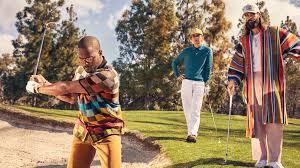human made new online fashion lifestyle
In the digital age, the term "human-made" is undergoing a transformation, particularly in the realm of online fashion and lifestyle. Traditionally associated with artisanal craftsmanship and bespoke creations, the concept now embodies a fusion of creativity, technology, and sustainability. Human-made fashion is no longer confined to physical marketplaces; it thrives in the virtual world, where innovation reshapes how we perceive style, consume products, and define our lifestyles. This shift marks a pivotal moment for fashion enthusiasts, brands, and consumers alike, setting the stage for a new era of expression and engagement.
Redefining Human-Made in the Digital Fashion Space
Online platforms have become a thriving ecosystem for human-made fashion humanmades.shop and lifestyle brands. These platforms bridge the gap between creators and consumers, offering a space for artisanal designs to flourish alongside high-tech innovations. Human-made products now span a spectrum that includes handcrafted jewelry, virtual fashion for avatars, and digitally designed couture.
The appeal of human-made creations in the online space lies in their ability to offer individuality. With a global market at their fingertips, consumers seek products that resonate with their personal stories. Online brands cater to this demand by offering customized, made-to-order pieces that blur the lines between mass production and bespoke artistry. Whether it’s a handwoven scarf from a local artisan or a digitally crafted NFT accessory, the value lies in the uniqueness and story behind the product.
The Role of Technology in Human-Made Fashion
Technology is at the heart of this online revolution. Advanced tools like 3D printing, augmented reality (AR), and artificial intelligence (AI) have expanded the horizons of what can be human-made. AR allows customers to virtually try on outfits and accessories, reducing the guesswork and making online shopping more immersive. AI-driven algorithms curate personalized recommendations, ensuring that each user’s experience feels tailored to their preferences.
Virtual reality (VR) is also emerging as a significant player in the online fashion and lifestyle Human Made sector. Virtual fashion shows, digital fitting rooms, and entirely virtual wardrobes are redefining the boundaries of fashion. These innovations cater to the growing demand for sustainable consumption, as they reduce waste and emphasize digital ownership over physical products.
Sustainability and Ethics in Human-Made Online Fashion
Sustainability is no longer just a buzzword; it is a fundamental expectation in the fashion and lifestyle industry. Human-made online brands are leading the charge by embracing eco-conscious practices. From using recycled materials to implementing carbon-neutral shipping methods, these brands prioritize environmental responsibility without compromising on style or quality.
Moreover, the digital nature of these businesses offers additional sustainability benefits. By reducing the need for brick-and-mortar stores and adopting made-to-order production models, online human-made brands minimize waste and overproduction. These practices align with the values of modern consumers, who are increasingly conscious of their environmental footprint.
Ethical production is another cornerstone of human-made fashion. Many online brands emphasize transparency, showcasing their production processes and ensuring fair wages for artisans and workers. This ethical approach resonates with consumers, who seek to invest in products that align with their values.
The Rise of Lifestyle Curation in the Online Space
The concept of "lifestyle" has evolved alongside the fashion industry, with online platforms playing a crucial role in its curation. Human-made lifestyle products—ranging from home decor to wellness items—are becoming integral to how individuals express themselves. Online marketplaces offer a vast array of options, allowing consumers to create spaces and routines that reflect their personalities.
Social media and influencers further amplify this trend. Platforms like Instagram, Pinterest, and TikTok showcase how human-made products can enhance daily life, from creating cozy, aesthetic home setups to promoting mindful living with eco-friendly tools. This shift emphasizes that lifestyle is not just about what you wear but also about how you live.
Challenges and the Future of Human-Made Online Fashion
While the rise of human-made fashion and lifestyle in the online world is exciting, it is not without challenges. Counterfeit products, oversaturation, and the digital divide are significant hurdles. However, advancements in blockchain technology are offering solutions, such as ensuring authenticity through secure digital certificates for human-made items.
As technology continues to evolve, the potential for human-made fashion and lifestyle products is limitless. The integration of virtual and augmented realities, AI-driven personalization, and sustainable practices will continue to define the industry. Additionally, the rise of the metaverse offers a new frontier for human-made creations, where digital fashion and lifestyle products will play a central role in virtual identities.
Conclusion
The online fashion and lifestyle space has become a vibrant playground for human-made creations. By combining the artistry of craftsmanship with the power of technology, this new wave of innovation offers unparalleled opportunities for self-expression and sustainability. As consumers increasingly seek products that align with their values and aspirations, human-made fashion and lifestyle brands are poised to lead the charge. This era of transformation not only redefines what it means to be human-made but also sets a powerful precedent for how we shape the future of fashion, technology, and lifestyle .
What's Your Reaction?





















